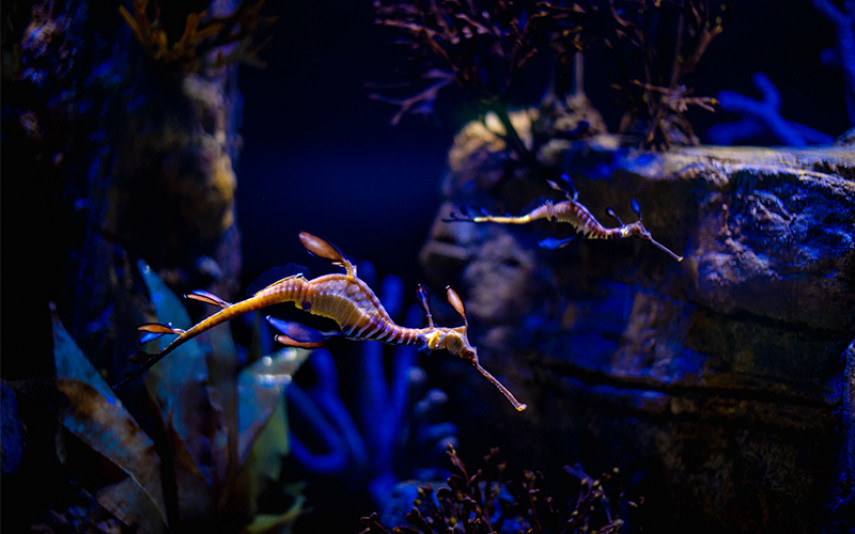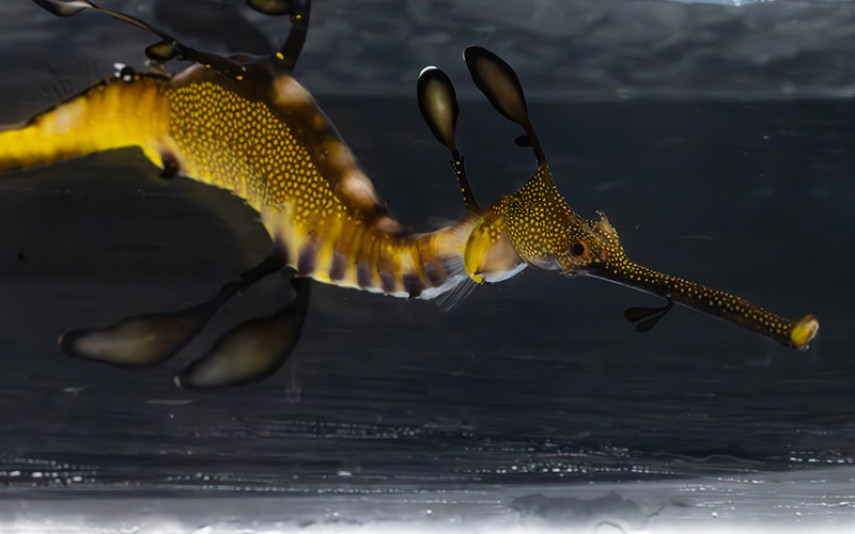Five juvenile Weedy Seadragons are swimming into the spotlight, making their public debut in Seadragons & Seahorses at Birch Aquarium at Scripps Institution of Oceanography at UC San Diego. These are some of the dozens that hatched at Birch Aquarium last March, marking a phenomenal success in the aquarium’s seadragon conservation efforts.
“This moment is years in the making,” said Leslee Matsushige, Associate Curator. “Everything we were hoping to happen, happened. These seadragons show that the design of our display works!”

In 2012, Matsushige ventured to Australia to study seadragons in the wild, observing their behaviors and habitat. She then utilized her findings to help build a seadragon display at the aquarium designed to provide an optimal environment for them to mate and breed. Fast forward to last year when the aquarium witnessed the first successful egg transfer in the display and then the hatching of dozens of Weedy Seadragons. Now over a decade since that trip to Australia, her efforts have come full circle as this new generation of seadragons moves into the very habitat built based on those observations.
Behind the scenes, each juvenile was carefully collected and placed in a separate holding area where they were individually photographed for identification purposes. Much like human fingerprints are one-of-a-kind, seadragons exhibit distinctive characteristics. Different combinations of unique facial features, patterns and appendage shapes help the aquarium’s seadragon care team tell one seadragon from another.

Identifying each individual helps keep better track of the overall animal health and genetic diversity of the population as well as streamlines record-keeping processes. Once photographed, the juveniles were carefully transported into the seadragon display in Seadragons & Seahorses, where guests can now see them for the first time.
“It’s an exciting time to move some of our juveniles on display and we’re excited to see them continue to thrive,” continued Matsushige.
The aquarium believes all five juvenile seadragons are male, however, this will be confirmed when they reach maturity at around two years old. They measured slightly over half an inch upon hatching, and have grown to about nine inches long over the past year.
Some will remain behind the scenes at Birch Aquarium, while others will be relocated to Association of Zoos and Aquariums (AZA) accredited organizations to ensure a healthy, genetically diverse and sustainable population of seadragons in human care.
About Birch Aquarium at Scripps